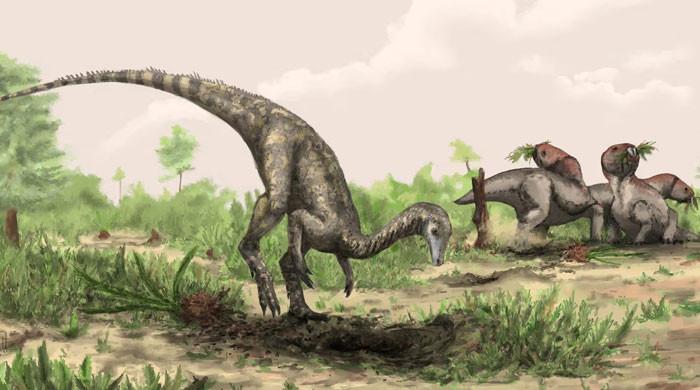Study Suggests Dinosaur Decline Before Asteroid Hit Was Due to Poor Fossil Record
A recent study indicates that dinosaurs were not declining in population before the asteroid impact. Instead, limited fossilization conditions and undiscovered late Cretaceous rock layers have made their remains scarce and difficult to find.
Fossil evidence has long suggested that dinosaur numbers and diversity were decreasing leading up to the asteroid impact that marked the end of the Cretaceous period, according to Live Science.
Some researchers previously interpreted this as a sign that dinosaurs were already headed toward extinction before the catastrophic event.
This idea has been a subject of debate, with other researchers contending that dinosaur diversity was thriving at the time of their disappearance.
New research, published in the journal Current Biology on Tuesday, proposes that the perceived rarity of dinosaur fossils from before their extinction may simply be due to an incomplete fossil record.
Scientists examined records of approximately 8,000 fossils from North America, dating from the Campanian age (83.6 million to 72.1 million years ago) and the Maastrichtian age (72.1 million to 66 million years ago).
Their study concentrated on four families: Ankylosauridae, Ceratopsidae, Hadrosauridae, and Tyrannosauridae.
The initial analysis revealed that dinosaur diversity peaked around 76 million years ago, followed by a decline until the asteroid impact eliminated the non-avian dinosaurs.
This trend was further emphasized by the decreasing number of fossils from all four families in the geological record, particularly in the 6 million years leading up to the mass extinction.
However, the researchers discovered no evidence of environmental conditions or other factors that would account for this decline.



Comments (0)
No comments yet. Be the first to comment!
Leave a Comment